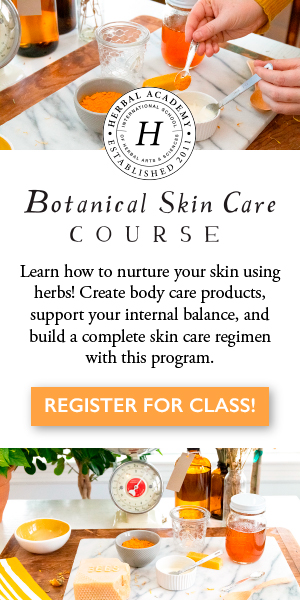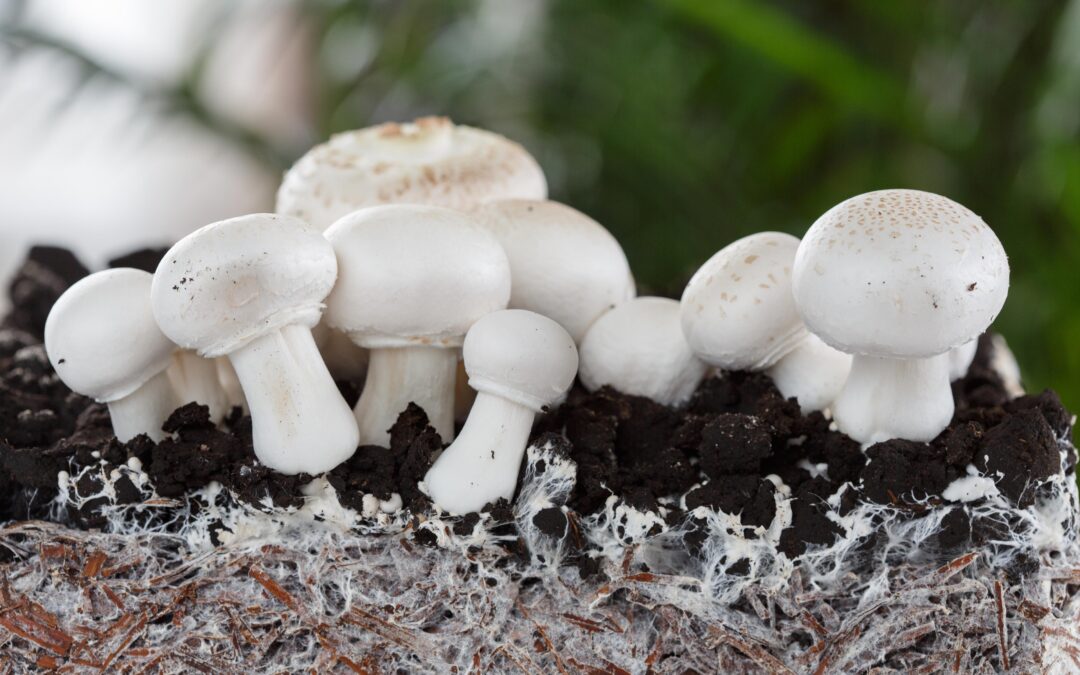
by Leslie Moldenauer | | Essential Oils, Mind
Digestive enzymes play the role of helping to break down our food by creating chemical reactions, which makes them invaluable in supporting our digestive system. These primary enzymes are amylase, which helps to break down starches and carbs into sugars; protease, which is responsible for breaking down proteins into amino acids; and lipase, which breaks down lipids commonly known as fats and oils. Mycelium found in the network of the root system of mushrooms is another source of enzymes and is a potent elixir for health. Some state that the mushroom’s fruiting body is the only part of the fungi worth consuming, but that is not the whole story. Welcome the miracle mushroom, mycelium polysaccharides for health.
Mycelium is the vegetative part of fungi, consisting of a vast network of delicate, thread-like structures called hyphae. It plays a crucial role in nutrient cycling and decomposition in ecosystems. It is truly fascinating how it supports life underfoot. Mycelium has garnered increasing attention for its potential health benefits, particularly in recent years. The health benefits of mycelium from mushrooms are vast, as many people are discovering. Think of mycelium as the plant’s immune system; this system or network allows the mushroom to thrive.
There are benefits to mycelium and the fruit body of a mushroom. Testing has shown that more beta-glucans (polymers) exist in the fruit body (soluble and insoluble forms). Still, we must look at the whole, not just a part of the mushroom to understand the big picture, including the complex system of mycelium (much like another powerhouse green plant we all know and love that is most beneficial as a full spectrum) and you will discover, not all heroes wear capes.
*Those reading this blog over the years know that essential oil distillation does not remove much of the plant’s chemical compounds, and to get as close to the profile of the plant as possible, CO2 extraction is much more valuable. When it comes to mushroom extracts, many active ingredients are not extracted in the hot water process, which is the same issue presented with steam-distilled essential oils. Hot water extraction is only one of many methods to extract valuable constituents for mushrooms, although it is the most common.
Mycelium is not simply dug up from the ground and processed for consumption; it must be grown, or the proper term, fermented. Most reputable companies use organic brown rice to accomplish this task, while others use organic oats.
Because of this, nay-sayers state that mycelium-based products are ineffective and pumped full of fillers. It turns out that is not the full story.
Enter the research that found that mushroom mycelium and its fermented substrate have potential health benefits (Fungi Perfecti, 2019).
To summarize the research:
-Mushroom mycelium is “incredibly potent in triggering immune cell function.”
-Even when separated from pure mycelium, fermented substrate (organic brown rice) effectively supports natural immune function.
-Pure mycelium and fermented substrate each offer unique yet complementary health benefits.
-Many constituents, not just beta-glucans, stimulate the immune-enhancing benefits of mushrooms. Think of this as the whole, not just a piece.
The research confirms that the beneficial mushroom mycelium and the fermented substrate used to grow the mycelium are both immunologically active. They cannot be separated. This is comparable to other fermented products we know and love, including kombucha, yogurt, and kefir.
Polysaccharides are another bioactive constituent in the fruiting body and the mycelium (Liu et al., 2016). A growing body of research shows that these polysaccharides play an essential role in healthy gut microbiota as a form of prebiotics. These polysaccharides have anti-inflammatory, anti-tumor, and anti-cancer properties (Hyder & Dutta, 2021). The fruiting body and mycelium also contain beta-glucans, which stimulate and boost the immune system, helping the body defend against infections and disease.
*This article was not written to diagnose or treat disease, only to inform.
Mycelium shines in several areas, including its ability to increase nutrient absorption. That is important for those with gut imbalances and possibly even leaky gut. Mycelium is adept at absorbing nutrients from its surroundings, making it a rich source of vitamins, minerals, and other bioactive compounds. Consuming it can supplement our diet with these essential nutrients, promoting overall health.
Mycelium is also known for breaking down complex organic compounds, including toxins and pollutants, into simpler molecules that can be excreted from the body, such as sugars and amino acids. Therefore, we can reasonably conclude that mycelium’s enzymes can also detoxify our terrain, supporting the body’s detoxification processes when consumed. This is the likely explanation for mycelium’s anti-tumor action.
Many say that the liver does a fine job at detoxifying our bodies; however, much like a glass that can only hold so much water before overflowing, our increasingly toxic environment, coupled with mineral loss in food and not eating well enough, leaves our liver unable to function as well as it could. Much literature suggests an association between impaired detoxification and diseases like cancer, Parkinson’s disease, fibromyalgia, and chronic fatigue/immune dysfunction syndrome (Liska, The Detoxification Enzyme Systems 1998). We cannot leave it all to our liver without providing it with additional support.
Antioxidant Properties
Some mushrooms and mycelia are rich in antioxidants, such as polyphenols and flavonoids. Antioxidants can help combat oxidative stress and reduce the production of harmful free radicals, which may play a role in detoxifying the body. Some mushrooms high in antioxidants include shiitake, lion’s mane, and reishi. Antioxidants lower oxidative stress, which supports heart health and brain function (Mandal, 2018).
Immune System Support
Certain mushrooms, like Reishi and Turkey Tail, have been studied for their immunomodulatory properties. A well-functioning immune system is crucial for the body’s defense against toxins and pathogens.
It is important to note that while there is research on the potential health benefits of various mushrooms and their mycelia, the field of mycology and its connection to human health is still evolving. Specific effects and mechanisms of action can vary depending on the type of mushroom and its bioactive compounds.
It is essential to note that mycelium’s health benefits are still an active area of research, and while promising, more studies are needed to fully understand its mechanisms and potential. Mycelium is commonly consumed in various forms, such as dietary supplements, teas, and culinary dishes. However, consulting with a healthcare professional before incorporating it into a daily routine is advisable, especially if specific health concerns or conditions exist.
I am not a mushroom supplement company affiliate, but have a purchase criterion. Look for organic and sustainable. Look for a company that offers both the fruiting body and the mycelium. Stay tuned for future articles on the subject, as this is just the tip of the miracle mushroom iceberg.
To your health,
Leslie
References
Benson, K. F., Stamets, P., Davis, R., Nally, R., Taylor, A., Slater, S., & Jensen, G. S. (2019). The mycelium of the trametes versicolor (Turkey tail) mushroom and its fermented substrate each show potent and complementary immune activating properties in vitro. BMC Complementary and Alternative Medicine, 19(1). https://doi.org/10.1186/s12906-019-2681-7
Fungi Perfecti, L. (2019, December 6). Immune benefits of mushroom mycelium & fermented substrate validated by peer-reviewed science. PR Newswire: press release distribution, targeting, monitoring and marketing. https://www.prnewswire.com/news-releases/immune-benefits-of-mushroom-mycelium–fermented-substrate-validated-by-peer-reviewed-science-300970408.html
Hyder, M. S., & Dutta, S. D. (2021). Mushroom-derived polysaccharides as antitumor and anticancer agent: A concise review. Biocatalysis and Agricultural Biotechnology, 35, 102085. https://doi.org/10.1016/j.bcab.2021.102085
Liska, D. (1998). The Detoxification Enzyme Systems. October 17, 2023, http://anaturalhealingcenter.com/documents/Thorne/articles/DetoxificationEnzymes.pdf
Liu, X.-C., Zhu, Z.-Y., Tang, Y.-L., Wang, M., Wang, Z., Liu, A.-J., & Zhang, Y.-M. (2016). Structural properties of polysaccharides from cultivated fruit bodies and mycelium of cordyceps militaris. Carbohydrate Polymers, 142, 63–72. https://doi.org/10.1016/j.carbpol.2016.01.040
Mandal, Dr. A. (2018, August 23). Mushrooms contain high amounts of antioxidants that combat aging and promote health. News. https://www.news-medical.net/news/20171109/Mushrooms-contain-high-amounts-of-antioxidants-that-combat-aging-and-promote-health.aspx
Rubel, R., Santa, H. S., dos Santos, L. F., Fernandes, L. C., Figueiredo, B. C., & Soccol, C. R. (2018). Immunomodulatory and antitumoral properties of ganoderma lucidum and Agaricus brasiliensis (agaricomycetes) medicinal mushrooms. International Journal of Medicinal Mushrooms, 20(4), 393–403. https://doi.org/10.1615/intjmedmushrooms.2018025979
Astragalus Root for Immune System Support and Respiratory Ailments
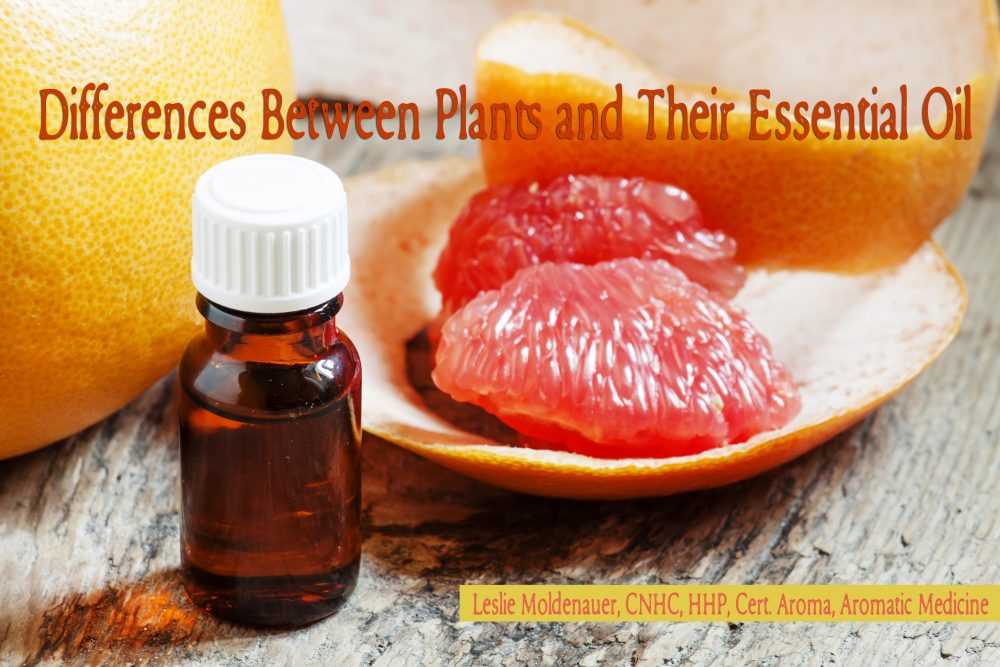
by Leslie Moldenauer | | Essential Oils, Herbs
It goes without saying that essential oils come from plants, but this does not necessarily mean that the therapeutic benefits or uses from the plant to essential oil is the same. In many cases, this does not hold true. What are the differences between plants and their essential oil? It can be quite significant.
There can be crossovers such as with lavender for example. A cup of herbal lavender tea will help to relax you as will a good sniff of Lavender Lavandula angustifolia essential oil. Oftentimes, you can find proposed uses for essential oils on the Internet and social media that are solely based on how the plant (herb, spice, fruit) originated from that essential oil has been historically used.
Many assumptions are made, so my goal today is to talk about the differences between the two.
Nutritional Content-Herbs Vs Essential Oils
Herbs and spices have been used for centuries for their nutritional benefits. As a matter of fact, many were celebrated for their medicinal property, long before their culinary use. The oldest written evidence of medicinal plants’ usage for the preparation of drugs has been found on a Sumerian clay slab from Nagpur, approximately 5000 years old (1).
We all know that herbs contain vitamins, minerals, antioxidants, phytonutrients, protein and much much more. They are powerhouses for our health, can be used for many things that ail us, and are powerful tools to restore homeostasis. Herbal medicines are just one type of dietary supplement. They are sold as tablets, capsules, powders, teas, extracts, and fresh or dried plants. Essential oils, however, contain no nutrition at all, and therefore cannot be considered supplements.
How can that be you ask? Let’s briefly look at the facts. Steam distillation, which is the most common form of extracting essential oils is done so by placing plant material in a still; steam from boiled water is passed through the plant material and is then cooled to collect the essential oil. This essentially separates the volatiles from the non-volatiles. This is done right around 100° C/212° F (on average). All essential oils are very volatile (this is very important to remember).
There are two important key points here; the first is the heat of steam distillation. The second is volatiles vs non-volatiles. When we look at vitamins and minerals, they degrade at specific temperatures. B vitamins degrade right around room temperature, 20 to 25° C or 68 to 77° F. This is much lower than the temperature of steam distillation; therefore no B vitamins will be present in essential oils (2).
Vitamin C is the most popular claim when it comes to citrus essential oils. Many are told to place citrus essential oil in their water daily or multiple times a day to obtain the daily dose of vitamin C. Vitamin C degrades at 70° C or 158° F, showing it is not possible to have any vitamin C in citrus steam distilled oil (3). Even when looking at the cold-pressed essential oil, the amount of vitamin C is extremely minute.
Read more about this here.
In addition, B and C vitamins are water-soluble. Any water-soluble vitamin will be left in the water, and will not make it through steam distillation to the fat-soluble essential oil. (Minerals are also water-soluble).
Lipids or fat-soluble vitamins such as A, D, E, and K are non-volatiles. Remember above where I said that the end product of steam distillation contained only volatiles? This shows beyond a shadow of a doubt, that essential oils contain no vitamins or minerals.
As mentioned above, the essential oil that is steam distilled contains only volatile material. This is very different from the herb or the whole plant, which contains volatiles and non-volatiles.
After looking at the chemistry of essential oil and the distillation process, it becomes easy to see that essential oils could not possibly contain nutrients, or on their own be considered a supplement.
Want to understand more about fat-soluble vs water-soluble vitamins? Read more here.
Cinnamon
Cinnamon is a spice that comes from the branches of wild trees that belong to the genus “Cinnamomum”.
Cinnamon and other spices and herbs rich in plant polyphenols can help control blood sugar and insulin spikes after meals (4). One placebo-controlled trial found that a supplement containing cassia cinnamon, chromium and carnosine successfully lowered fasting blood sugar in people with pre-diabetes (5). When polyphenols are studied, we know that there are many health benefits associated with them.
Since essential oils do not contain nutrients, we can see that cinnamon essential oil can not beyond a shadow of a doubt have the capacity to lower blood sugar…even though you can go and do a quick Google search and find that exact claim very easily. It is important to do your research and understand the science.
The cautions from the spice to the essential oil also vary. You would need to take very large amounts of the spice to have any real risk; the essential oil(s) however have quite a few such as potential drug interactions, possible issues for those with blood clotting concerns and an increased risk of skin irritation/sensitization to name a few. For more on the cautions and contraindications of cinnamon essential oil, refer to Robert Tisserand’s, Essential Oil Safety 2e. Learn more about the cautions of the spice here.
Fennel
Fennel Foeniculum vulgare essential oil is often claimed on the Internet to be able to increase a mother’s breast milk. Is fennel essential oil safe during pregnancy as well as lactation? Fennel essential oil and specifically the chemical constituent (E)-anethole in fennel is a known hormonal modulator (6). This is essentially a substance that regulates the hormones of the body. Why is this an issue during this passage of life? The entire function of the body relies on an extremely precise conversation between the central nervous system (CNS) and hormones.
Hormones regulate essentially all body functions, a few of them are storage and usage of nutrients, growth, and development, electrolyte balance, but most importantly for the purposes of this article=reproductive functions (7).
Hormonal changes associated with our moon cycle may bring about the following temporary conditions: tender nipples, varying levels of irritability, headaches (often associated with the hormonal shift during PMS), a slight dip in milk supply (usually not a big problem), and the hormone prolactin that is responsible for mother’s letdown and overall production of milk, enabling her to feed her nursling (8).
You can compare this hormonal modulation to the birth control pill. Doctors will not place you on a birth control pill containing estrogen as a newly lactating mother, simply because of the altering of hormones. An OB/GYN doctor will typically prescribe a progesterone-only pill, or recommend waiting all-together, as there are so many unknowns involved during this time.
Whether or not fennel essential oil even has the capability to increase milk production is a moot point, as safety or in this case lack of safety for mom and baby, outweigh any possible, potential benefit.
Fennel, the herb, can increase mother’s milk, but also carries with it a certain amount of risk as well. According to WebMD, “during breastfeeding, fennel is POSSIBLY UNSAFE. It’s been reported that two breastfeeding infants experienced damage to their nervous systems after their mothers drank an herbal tea that contained fennel” (9). Is this a stretch? Possibly..maybe….
They go on to further say avoid fennel in these instances:
Bleeding disorders: Fennel might slow blood clotting. Taking fennel might increase the risk of bleeding or bruising in people with bleeding disorders. Reiterating from the hormone conversation above, hormone-sensitive conditions such as breast cancer, uterine cancer, ovarian cancer, endometriosis, or uterine fibroids: “Fennel might act like estrogen. If you have any condition that might be made worse by exposure to estrogen, do not use fennel” (10).
Despite these facts, many are still recommending massaging above the nipple with fennel essential oil to increase breast milk supply. If you know someone who does this, please share with them the facts and concerns of this practice for themselves and their nursling.
Grapefruit
Grapefruit Citrus paradisi essential oil, coming from the rind of the fruit is very different from the other two examples, however, the generalizations made between what the fruit provides us versus the essential oil is perhaps the most significant of the three.
It is assumed that taking grapefruit essential oil internally in water will 1-detoxify you/cleanse the body, 2-help you to lose weight, 3-uplift mood.
The truth is, 1-essential oils do not cleanse the body or detoxify you. Taking grapefruit essential oil in water will likely put added stress on the body (liver), as your body will quickly work to remove the “foreign material”. 2-inhaling grapefruit essential oil can help to manage cravings due to its sweet scent (this can be construed as helping to not “gain weight” or to help initiate weight loss)(11) and 3-inhaling grapefruit essential oil can uplift mood. As you can see, an understanding method of use for the intended outcome is really important.
The true grapefruit is full of nutrients such as vitamins A, C, potassium, lycopene, etc. It is easy to see that grapefruit has a stellar nutrient profile. Perhaps the most impressive is that even though it contains plenty of natural sugar, it is extremely low in the glycemic index (GI) so it does not affect blood sugar levels. Many studies suggest that it decreases the risk of heart disease and diabetes, and has been proven to help you to lose weight (12).
Closing
After reading through all of this information, you may be wondering if I believe essential oils work! I assure you that I adore them and have seen their benefits first hand. My goal is to help you to see their limitations, to understand the many myths that are out there in cyberspace. Essential oils are a fantastic complementary modality, and when respected, curated, and cared for, they can have many benefits to our overall health and wellness.
References
(1) Kelly K. History of medicine. New York: Facts on file; 2009. pp. 29–50
Petrovska, B. (2012) Historical review of medicinal plants’ usage. Pharmacognosy Review. Jan-Jun; 6(11): 1–5.
(2) Fortification basics, stability. Retrieved from https://www.dsm.com/content/dam/dsm/nip/en_US/documents/stability.pdf
(3) Rahmawati, S., Bundjali, B. Kinetics of the oxidation of vitamin c. Retrieved from http://www.researchgate.net/publication/228484005_KINETICS_OF_THE_OXIDATION_OF_VITAMIN_C
(4) Bozzetto, L. et.al. Polyphenol-rich diets improve glucose metabolism in people at high cardiometabolic risk: a controlled randomised intervention trial. Diabetologia 2015 Jul;58(7):1551-60
(5) liu, Y. et.al (2015) A Dietary Supplement Containing Cinnamon, Chromium and Carnosine Decreases Fasting Plasma Glucose and Increases Lean Mass in Overweight or Obese Pre-Diabetic Subjects: A Randomized, Placebo-Controlled Trial. PLOS One. Sep 25;10(9):e0138646
(6) Tisserand, R., Young, R., Essential Oil Safety2e (2014) (p277-278)
(7) Hormones. Retrieved from
http://www.hormone.org/hormones-and-health/types-of-hormones
(8) About Hormone Imbalance. Retrieved from
About Hormone Imbalance
(9) (10) WebMD Fennel. Retrieved from: http://www.webmd.com/vitamins-supplements/ingredientmono-311-fennel.aspx?activeingredientid=311&activeingredientname=fennel
(11) Shen, J. et.al (2005) Olfactory stimulation with scent of grapefruit oil affects autonomic
nerves, lipolysis and appetite in rats. Science Direct. 289–294
(12) Hawrelak, J., Myers P. Grapefruit Causes Weight Loss. Journal of Complementary Medicine. Vol. 6, No. 1, Jan/Feb 2007: 76-77
BEFORE YOU GO! Remember to sign up for my FREE Facebook group! Hang out with me and THOUSANDS of other Essential Oil lovers looking to learn, click on to join Real Essential Oil Education Group!
Like so many practices in life I encourage you to become educated on the proper use of essential oils. When using them, please do so cautiously, understanding that there is often misinformation on the internet. You can be assured that I support only educated and proven resources. While essential oils should not be feared they should be respected and used properly to ensure the safety of the individuals using them.
Please note that I am not a medical practitioner. The content of this website is provided for general informational purposes only and is not intended as, nor should it be considered a substitute for, professional medical advice. Do not use the information on this website for diagnosing or treating any medical or health condition. If you have or suspect you have a medical problem, promptly contact your professional healthcare provider. By using this website, you assume full responsibility and liability for your own actions.
From Farm to Oil: Evolution of Plant Medicine-A Spotlight on Sweet Orange Essential Oil
Essential Oils-Do They Contain Vitamins and Minerals?
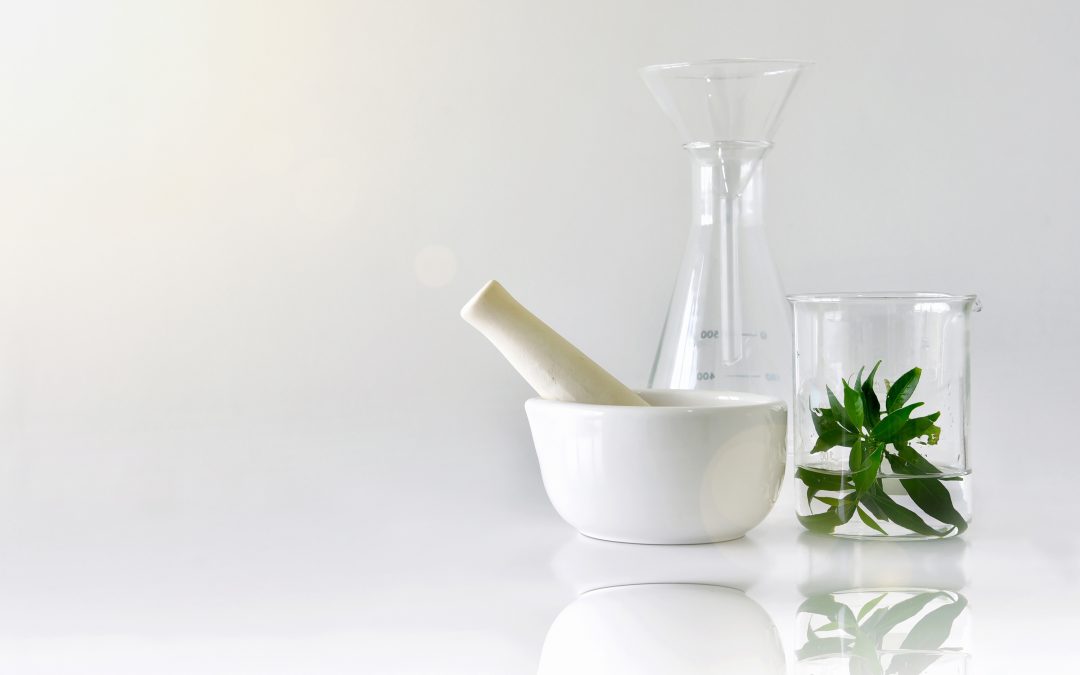
by Leslie Moldenauer | | Essential Oils
What is the science behind essential oils for our emotional health? These beautiful healing catalysts? Are they in fact magical? Or are they only a placebo? Do they work?
There are articles floating around the Internet that state that essential oils do not work as they are purported to. Essential oils work through our olfactory system (sense of smell) and we know that our sense of smell plays an integral role in daily life. So how do essential oils work exactly?
In an excerpt from my most recent book:
“Have you ever wondered why certain smells have the ability to conjure up memories and physical feelings so distinctly? Odor/memory links like these are known as the Proust Phenomenon in credit of French writer Marcel Proust, who romanticized the memories evoked by the smell of his biscuit after soaking in a cup of tea in his novel À la recherche du temps perdu (1,2).“
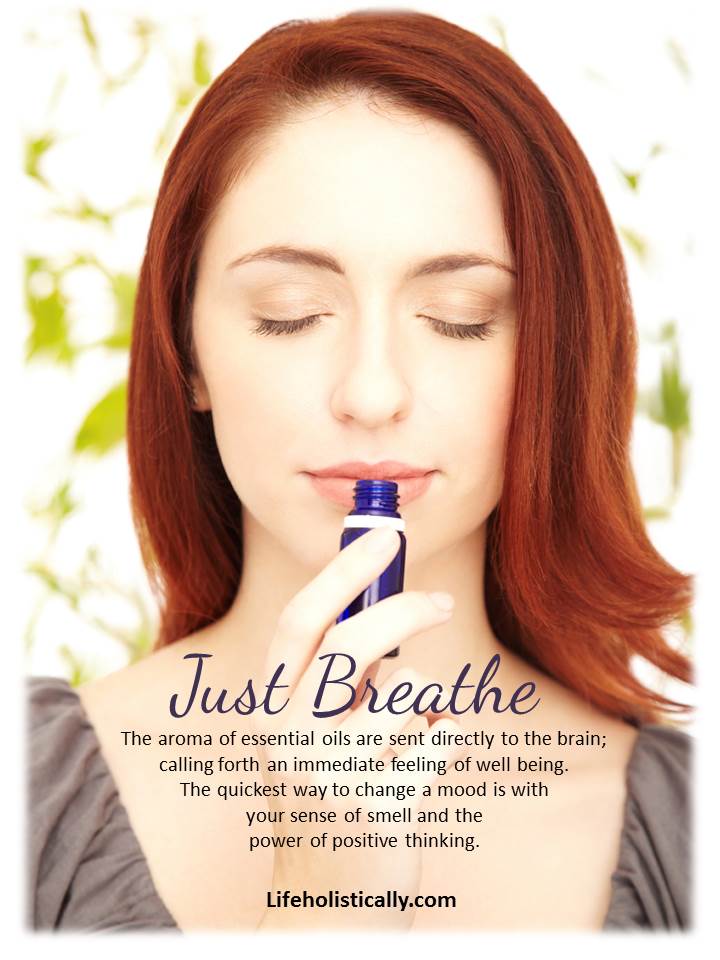
How do we interpret an aroma?
Our olfactory system is our bodily structure that supports our sense of smell. Humans can identify at least 1 trillion different odors, whereas a dog can detect upwards of 10,000 times that number (2).
Our sense of smell goes through five stages, those are: detect, transmit, perceive, analyze, and store. These stages cycle remarkable quickly. Up inside our nose, inside each nostril is the beginning of our olfactory system called the olfactory epithelium. The olfactory epithelium is the size of a small postage stamp in each nostril and has 40 million sensory neurons, capable of detecting .0000000013 of an ounce of an aroma in a single breath of air (3).
Once our sensory neurons detect an aroma, signals are sent to the brain via our olfactory bulbs. These bulbs are actually a part of the brain, they send signals to two places and for two purposes:
1. Signals are sent to our limbic system, comprised of the hypothalamus, amygdala, thalamus, and hippocampus, which is the most primitive brain center influencing our emotions as well as our memories.
2. Signals are also sent to the neocortex, which is what is deemed higher-order brain functions such as cognition, conscious thought, the foundation of our motor commands, and spatial reasoning and perception (4).
Therefore, as essential oil odor signals are sent directly to the limbic system, it is easy to see the correlation of the inhalation of essential oils and the effects on our emotions. Essential oils are in fact for emotional wellness!
“When we begin to use oils after blending them artfully for their desired chemical constituents, we quickly start to see how they can turn around melancholy, soothe fears, center us, uplift our mood, and promote an overall sense of calm. Simply put, essential oils encourage and support our well-being.” -Leslie Moldenauer, Emotional Healing with Essential Oils
Digging Deeper
Let’s look at a bit deeper at the sympathetic nervous system, our limbic system, and more specifically the amygdala. Our amygdala plays a role in emotions and behavior, and the primary role although oversimplified is identified by scientists is to process fear.
This is where freeze, fight, or flight begins, triggering the sympathetic nervous system (SNS). What do we know about the sympathetic nervous system? When triggered by stress a few key things happen:
*Heart rate accelerates
*Our bronchial airways open up (assisting us in flight)
*Blood pressure rises
*Constricted blood vessels (causing a likelihood of tingling extremities)
*Not an all-inclusive list
So what could essential oils role be here to combat this SNS stress response? Can essential oils calm us during times of stress and anxiety? When we look at one of the most commonly known essential oil constituent of linalool, we see they can help quite a lot.
*Linalool is prevalent in essential oils such as Bergamot, Ho Wood, Lavender, Neroli & Petitgrain, Rosalina, and many others.
Essential Oil Studies
Below are a few of the top studies showing how this one constituent can in fact play a large role in reversing the stress response.
1. The Effects of Lavender Oil Inhalation on Emotional States, Autonomic Nervous System, and Brain Electrical Activity (5)
Lavender oil caused a significant decrease in blood pressure, heart rate, and skin temperature in 20 healthy volunteers. The subject felt more themselves, fresher and relaxed. Alpha waves were also measured using an electroencephalogram (EEG), and results showed an increase in brain activity with inhalation, specifically an increase in Theta brain waves and a decrease in Beta waves, associated with relaxation.
2. Aromatherapy Improves Work Performance Through Balancing the Autonomic Nervous System (6)
This particular study analyzed the efficacy of aromatherapy in improving work performance and reducing workplace stress. Individuals in the aromatherapy group were assigned a task in from of the computer until completion while inhaling petitgrain essential oil.
The conclusion from the study: “Aromatherapy (inhaling petitgrain essential oil) can improve performance in the workplace. These results could be explained by an autonomic balance on the sympathetic/parasympathetic system through a combined action of the petitgrain main components (linalyl acetate, linalool, and myrcene). The final effect could be an improvement of the mental and emotional condition by a combination of reducing the stress level and increasing the arousal level of the participants in terms of attentiveness and alertness”.
3. Effects of inhaled Linalool in anxiety, social interaction and aggressive behavior in mice (7)
In this study, the inhalation of linalool showed anxiolytic (anti-anxiety) properties as well as decreased aggressive behavior in the light/dark test (mice exhibit aggression in the dark). One percent linalool was shown to be just as effective as diazepam, a common pharmaceutical used to combat anxiety.
There are many chemical constituents that assist in calming the mind and body, linalool is just one example compared to a drop of water in an ocean. Do keep in mind that essential oils are very synergistic. Numerous components come together to provide you with beautiful therapeutic properties that one constituent alone couldn’t.
So when we see reports that essential oils are nothing more than placebo…..I can’t help but laugh. We MUST look at the indisputable science as well as our own a-ha moments when we inhale them.
It is abundantly clear that essential oils do in fact support our emotional health!
Need help discerning what essential oil(s) may be right for you or a loved one? Grab a copy of my latest book, Emotional Healing with Essential Oils: Relieve Anxiety, Stress, Depression, and Mood Imbalances Naturally. I share 50 essential oils that are effective for our emotional health and over 100 easy to blend recipes.
Wishing you abundant health and happiness,
Leslie xo
References
(1) Moldenauer, L. (2019). Emotional healing with essential oils: Relieve anxiety, stress, depression, and mood imbalances naturally. Emeryville, CA: Rockridge Press.
(2) “Proust Revisited: Odours as Triggers of Aversive Memories.” Taylor & Francis. Accessed May 02, 2019. https://www.tandfonline.com/doi/abs/10.1080/02699931.2011.555475
(3) Human nose can detect 1 trillion odours. (n.d.). Retrieved June 26, 2020, from https://www.nature.com/news/human-nose-can-detect-1-trillion-odours-1.14904
(4) Peterson, D. (2012) Aroma 101. American College of Healthcare Sciences
(5) Neocortex (brain). (n.d.). Retrieved June 26, 2020, fromhttps://www.sciencedaily.com/terms/neocortex.htm
(6) The Effects of Lavender Oil Inhalation on Emotional States, Autonomic Nervous System, and Brain Electrical Activity https://pubmed.ncbi.nlm.nih.gov/22612017/
(7) Huang, L., & Capdevila, L. (2017). Aromatherapy Improves Work Performance Through Balancing the Autonomic Nervous System. The Journal of Alternative and Complementary Medicine, 23(3), 214-221. doi:10.1089/acm.2016.0061
(8) Linck, V., Silva, A. D., Figueiró, M., Caramão, E., Moreno, P., & Elisabetsky, E. (2010). Effects of inhaled Linalool in anxiety, social interaction, and aggressive behavior in mice. Phytomedicine, 17(8-9), 679-683. doi:10.1016/j.phymed.2009.10.002
Like so many practices in life, I encourage you to become educated on the proper use of essential oils. When using them, please do so cautiously, understanding that there is often misinformation on the internet. You can be assured that I support only educated and proven resources. While essential oils should not be feared they should be respected and used properly to ensure the safety of the individuals using them.
Please note that I am not a medical practitioner. The content of this website is provided for general informational purposes only and is not intended as, nor should it be considered a substitute for, professional medical advice. Do not use the information on this website for diagnosing or treating any medical or health condition. If you have or suspect you have a medical problem, promptly contact your professional healthcare provider. By using this website, you assume full responsibility and liability for your own actions.
Navigating the Seas of Change with Essential Oils
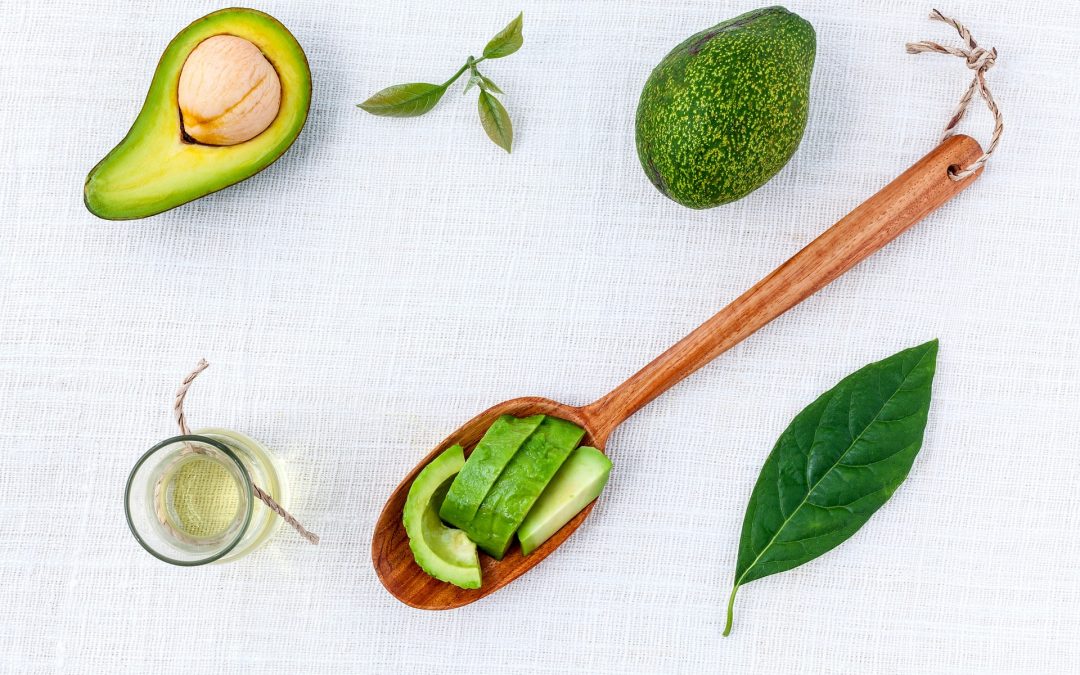
by Leslie Moldenauer | | Essential Oils
There any many essential oils that can benefit us when used stress. Why reach for Bergamot essential oil to support our mental wellness? Enjoy this complimentary essential oil monograph.
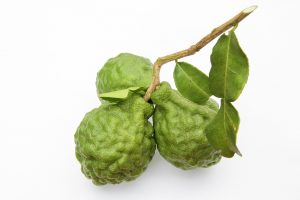
Method of extraction– Cold-pressed expression of medium ripened fruits
Blending factor– Top note. Bergamot has an initial intense heady aroma but burns off quickly as we would expect from a top note oil.
Aroma mantra- “I am always deeply centered and balanced, just as I am meant to be.”
Superstar qualities- 1. Limonene-Antimicrobial qualities provide a wonderful pick-me-up like other citrus oils. 2. Linalyl Acetate- Anti-spasmodic, provides relaxation and emotional balancing. 3. Linalool-Calming sedative properties. These three chemical constituents provide a beautiful synergy for our emotional wellbeing.
The details- Bergamot’s citrusy aroma blends well with many other essential oils. Its therapeutics makes it superior for our wellness. Reach for it when you are feeling burnt out as it is highly supportive of mental and physical fatigue (1). Many essential oils are adaptogenic in nature, meaning they meet you where you are; providing balance. Bergamot uplifts while providing peace, so it is indicated during times of situational anxiety and depression. Bergamot essential oil is a great supporter of our emotional and mental wellness.
Biggest myth- Skin reactions are a sign of detoxification. Not true. Bergamot oil is the most phototoxic of any essential oil. Do not apply to the skin and go out into the sun or lie in a tanning bed. A skin reaction from this oil or any other is not a sign of detoxification. Fun fact- Bergamot is used extensively in the food and flavoring industry. Fancy a cup of Earl Grey tea?
On a personal note- I have found great success using bergamot in a therapeutic inhalation during periods of SAD (seasonal affective disorder).
Blends well with-All other citrus oils, black pepper, chamomile Roman, clary sage, helichrysum, jasmine, lavender, niaouli, patchouli, peppermint, pink pepper, and ylang-ylang.
Safety considerations-According to the International Fragrance Association (IFRA), the maximum ratio for applying bergamot to the skin is 0.4%. The IFRA states that “The Standard is set due to the phototoxic effects of the material. The limit only applies to applications on skin exposed to sunshine, excluding rinse-off products (2).”
What do the studies say? (Studies shared in their entirety for your review)
1. Essential Oil Inhalation on Blood Pressure and Salivary Cortisol Levels in Prehypertensive and Hypertensive Subjects- The conclusion of this study was the inhalation of bergamot essential oil had immediate and positive effects on blood pressure and salivary cortisol levels (cortisol is an indicator of high levels of stress). Click here to discover the details.
2. The use of aromasticks at a cancer center- Learn how various essential oils are being used in cancer centers to help assist in helping patients be more comfortable, including bergamot essential oil. Click here to discover the details.
3. Bergamot Essential Oil Attenuates Anxiety-Like Behaviour in Rats-This study showed the undeniable antianxiety effects of bergamot essential oil as it was illustrated here with rats. Click here to discover the details.
Like so many practices in life, I encourage you to become educated on the proper use of essential oils. When using them, please do so cautiously, understanding that there is often misinformation on the internet. You can be assured that I support only educated and proven resources. While essential oils should not be feared they should be respected and used properly to ensure the safety of the individuals using them.
Please note that I am not a medical practitioner. The content of this website is provided for general informational purposes only and is not intended as, nor should it be considered a substitute for, professional medical advice. Do not use the information on this website for diagnosing or treating any medical or health condition. If you have or suspect you have a medical problem, promptly contact your professional healthcare provider. By using this website, you assume full responsibility and liability for your own actions.
References
(1) Watanabe, E., Kuchta, K., Kimura, M., Rauwald, H. W., Kamei, T., & Imanishi, J. (2015). Effects of Bergamot (Citrus bergamia (Risso) Wright & Arn.) Essential Oil Aromatherapy on Mood States, Parasympathetic Nervous System Activity, and Salivary Cortisol Levels in 41 Healthy Females. Complementary Medicine Research, 22(1), 43–49. doi: 10.1159/000380989
(2) IFRA Standard, Bergamot oil expressed. https://ifrafragrance.org/standards/IFRA_STD48_0164.pdf
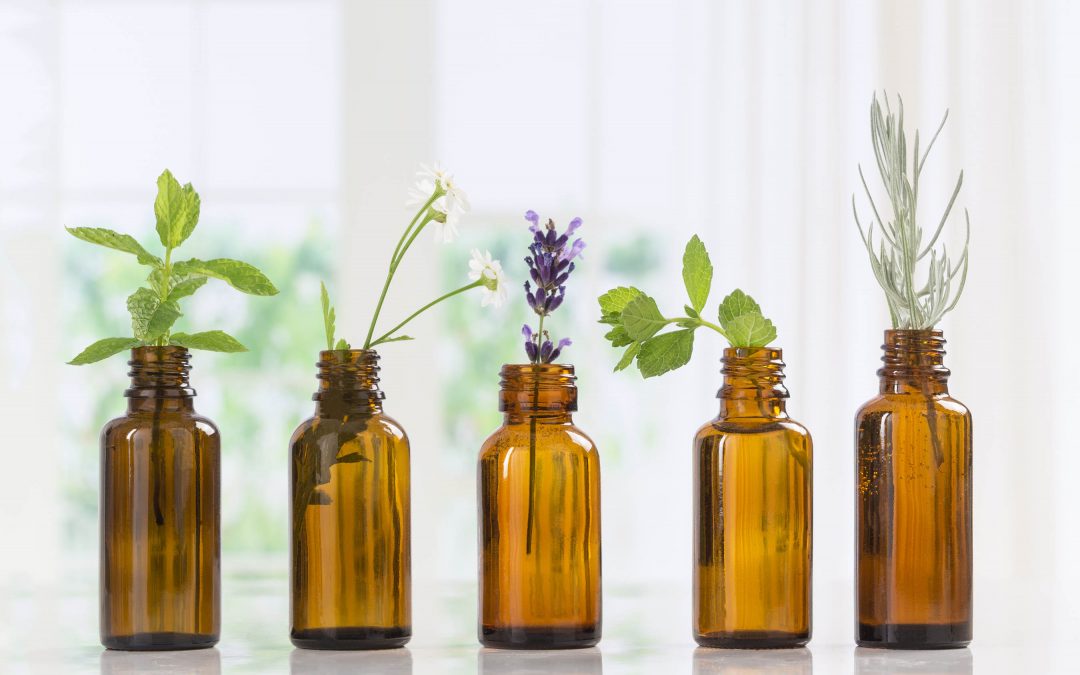
by Leslie Moldenauer | | Essential Oils
How can we navigate difficult changes with essential oils? Chronic worrying can lead to anxiety, panic, and essentially leave your nervous system unregulated and completely on edge. Sometimes you may feel like it is an endless roller coaster that you cannot get off of.
The one thing that causes concern for our overall health, is that a chronic worrier has their fight or flight response continually activated, we can easily fall outside of fight or flight, and into freeze. This falls into a term called allostatic load, or overload as the case may be.
What is Allostatic Load?
Allostatic load is “the wear and tear on the body” which accumulates as an individual is exposed to repeated or chronic stress (1).
I think we are all there right now. At least at some point in our day. The sympathetic nervous system switch is stuck in the on position, resulting in symptoms (not all-inclusive) such as:
-Physically and mentally unable to sit and relax
-Anxiety (heart palpitations/increased BP, irritability, headaches, insomnia, startle easily)
-Acid reflux, stomach aches, poor digestion,
-Chronic muscle tightness and pain
-Increased skin rashes
-Lack of productivity, forgetfulness, hopelessness, apathy, worry, paranoia
-The sensation of a lump in your throat or increasing clearing of your throat (related to acid/GERD)
I had a number of these over the last couple of weeks. I have a very clear pattern in my personality, my soul……worry…..anxiety…..introspection….take massive action!
This action is not always about work, not always a to-do list or even goal setting….with this pandemic it is choosing to let go. Choosing to stop gripping. Many people are talking about wanting the world to go back to normal. The world will never be the old normal, but the new. That is actually beautiful in many ways….but there is also a lot of uncertainty and unknown. That is my weakness, but I am slowly making it my greatest strength.
Why? How?
The Universe has always provided for me, always. All I have ever had to do was ask. Not once, not twice….but consistently.
Bring in the practice of abundance, manifesting, asking, praying (in whatever ways works for you), in the grand scheme of things…It is keeping your vibration high. Will you stay there all of your waking hours? A great big NO. We are human, these are trying times….BUT we can let the feelings in, be gentle and compassionate with ourselves..hug ourselves…love ourselves…and move onto the next moment.
How can we move from it? By activating our parasympathetic nervous system as much and often as we can. Read more about that here.
It requires a new way of thinking and living!
It requires living with complete self-awareness.
At times, it requires assistance.
Using Essential Oils to Support our Emotional Wellness
Bergamot (Citrus bergamia) Reach for this gem to help uplift your mind and provide much-needed respite during times of situational sadness and lows.
Black pepper (Piper nigrum) Can assist during the winds of spring when you are beginning to feel ungrounded and anxious.
Chamomile, Cape (Eriocephalus punctulatus) This is by far my favorite of the chamomiles and get help to incite calm when there is great overwhelm.
Cistus (Cistus ladaniferus) also called Rock Rose Is my oil of choice for shock and trauma. It has an affinity for the nervous system, great to use during tumultuous times.
Helichrysum (Helichrysum italicum) can really go to bat for you if you are feeling anxious and worried. It increases feelings of compassion for self and others with its beautiful honey-like aroma.
Laurel leaf (Laurus nobilis) Having trouble thinking positively, or finding the silver lining? Spend some time with laurel leaf to help turn that around.
Mandarin red (Citrus reticulata) Feeling stuck in freeze mode? Do deep breathing exercises with mandarin red by your side. The aroma will help when you are feeling stuck.
Palo Santo (Bursera graveolens) Call in protection during meditation for yourself, your family, and the earth using Palo Santo. The aroma helps bring great focus and concentration, enhancing meditative practices.
Ruh Khus (Vetiveria zizanoides) This green and heady essential oil, also called wild vetiver is amazing artfully blended to help with irritability, overthinking, and promotes restful sleep.
This is just a very small portion of the essential oils that we can look to help us in times of need. Check out the many others in my latest book, grab your copy today.
Reference
(1) Allostatic load. (2020, March 13). Retrieved from https://en.wikipedia.org/wiki/Allostatic_load
Like so many practices in life, I encourage you to become educated on the proper use of essential oils. When using them, please do so cautiously, understanding that there is often misinformation on the internet. You can be assured that I support only educated and proven resources. While essential oils should not be feared they should be respected and used properly to ensure the safety of the individuals using them.
Please note that I am not a medical practitioner. The content of this website is provided for general informational purposes only and is not intended as, nor should it be considered a substitute for, professional medical advice. Do not use the information on this website for diagnosing or treating any medical or health condition. If you have or suspect you have a medical problem, promptly contact your professional healthcare provider. By using this website, you assume full responsibility and liability for your own actions.
Categories of Grief & How Using Essential Oils Can Help
Reference
(1) Allostatic load. (2020, March 13). Retrieved from https://en.wikipedia.org/wiki/Allostatic_load
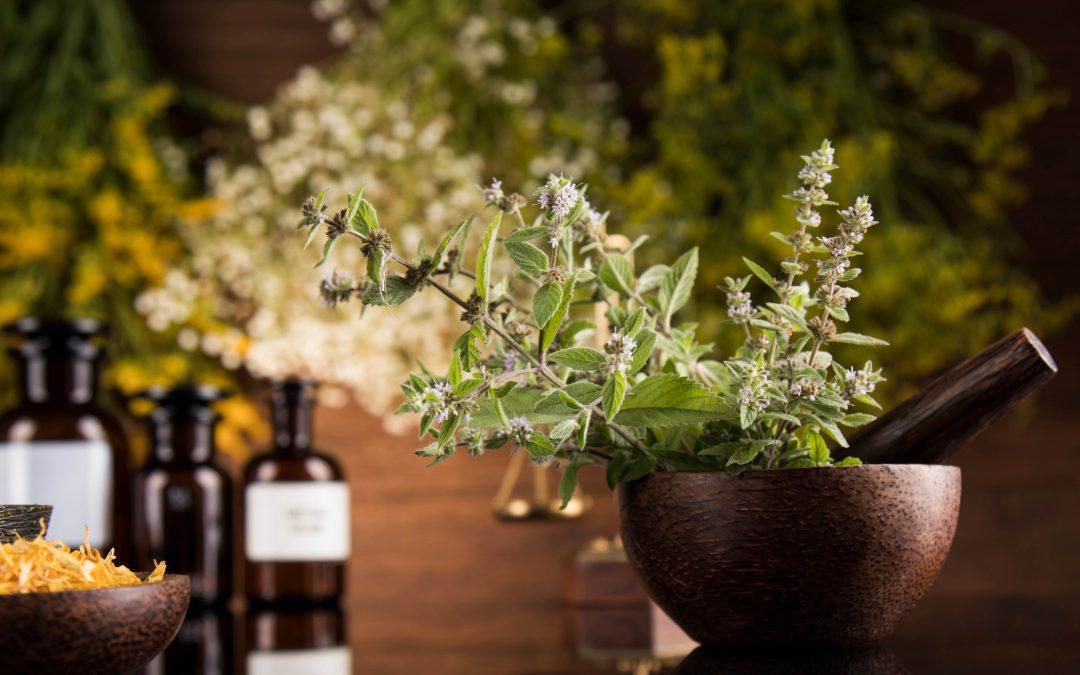
by Leslie Moldenauer | | Essential Oils
As I sit here beginning to write, the sun has shown up, and I notice how quickly that effects my mood for the better. During times of uncertainty, we are invited to go inside and notice the smallest of things to provide calm. How can we use holistic therapies to support us during difficult times?
Am I enjoying every moment of the quarantine? Definitely not. What I am doing is taking the time to work through my own life’s struggles and challenges. I am focusing on how I treat the world around me and about the importance of friends and community. In this interim, I have definitely had to step up my own self-care in order to be healthy.
I did a LIVE in my group today (3/21/2020), just to talk about a few of the things that I am doing/consuming to calm my nervous system and keep my immunity in tip-top shape. I thought putting it in a blog for all of my readers would be beneficial.
How can we use Holistic Therapies During Difficult Times
Nutrition
In order to keep my immune system working hard for me, I aim to keep the detoxification system of my body running strong. I do this by completely eliminating dairy, grains, and cutting back on my consumption of meat. In addition, I am making sure to up my intake of fruits and vegetables from my norm and making sure I stay hydrated.
Outside of the things I eliminate, I place the majority of my focus on how I can add nutritious things, not necessarily taking anything away. I cook with more herbs, drink tea, and consume a variety of herbal tinctures.
I work to keep my lymphatic system strong by performing daily dry brushing, lymphatic drainage massage, and try not to remain sedentary for too long.
Vitamins and Minerals
If you have been doing your research, you know that Vitamin C given intravenously has shown great promise for CV. I have made sure that the whole family is taking the next best thing, liposomal vitamin C, for optimal absorption. The idea of Vitamin C is that it is an antioxidant that may help prevent cytokine-induced damage to the lungs (1). Experts are now using it to combat damage in the lungs, much like has been done historically for incidences of whooping cough (2).
Keep in mind that in the case of vitamin C as it is a water-soluble vitamin, once your body absorbs the maximum amount that it can, the remaining will end up as expensive urine. Therefore, split up the dosage throughout the day. An early sign that you have consumed enough is via bowel tolerance.
*It is worth mentioning as many of you are followers due to the many safety articles that I share on essential oils, do not replace this with citrus essential oils. There are negligible amounts of vitamin C, at best, and it is not a safe daily practice. Read more about that subject, here.
Below are a few places for you to get liposomal vitamin C.
Institute for Progressive Medicine
Pure Encapsulations
In addition to liposomal C, I make sure to take probiotics, vitamin D, and a quality multivitamin that is specific to supporting my endocrine system.
Herbs
I have a variety of herbs sitting in 190 proof alcohol on my windowsills around my home for various reasons. With all the hubbub surrounding elderberries and elderberry syrup, I will address that first. In order to not recreate the wheel, I will share a few quality references on the subject below. It is important to pay attention to the research in which individuals are making their conclusions about something. In the case of elderberries, the recommendations were given off one lone study, in my opinion, that is not enough.
As an aromatherapist, I am very well versed in shoddy research, incomplete research, or when something looks promising but additional research is required. The bottom line is that elderberries are antiviral, they are not immune stimulants like we see in echinacea and garlic, for example. There is no reason to avoid taking elderberry syrup at this time as a preventative measure or to combat the cold or flu unless you are already dealing with an autoimmune illness. Use discernment with your own situation, always.
Resources on Elderberries
Gaia Herbs
Dr. Patrick Flynn
Above and Below Apothecary
As an alternative or addition to elderberries, and two of the best things and easiest to obtain would be astragalus (immune modulator) and licorice (antiviral).
Herbs to reach for to soothe the central nervous system (nervines) include lavender, chamomile, passionflower, lemon balm, hibiscus, valerian, oat tops, catnip, and skullcap (not all-inclusive).
Adaptogens can go a long way to help when we are under an assault from stress, which many of us are feeling right now. A few of those include ashwagandha (my preference), Rhodiola, eleuthero root, holy basil (tulsi), cordyceps, Schisandra berries, and Asian/American ginseng.
*As with all herbal recommendations, please research further to make sure the recommendation is appropriate for your medical history.
Essential Oils
There are a wide variety of essential oils that you can reach for during this time for emotional support, and a variety of therapeutic purposes.
My goal here is to provide you with as many resources as possible for you to read and listen too.
This first link is to a podcast interview I participated in with Samantha Lee Wright of The Essential Oil Revolution, where we discuss emotional healing.
The second is my latest book, Emotional Healing with Essential Oils where I give details on my top 50 oils for Emotional Healing, and 100 Applications and Remedies to blend at home, safety included!
This last link is to Stillpoint Aromatics, owned by my dear friend Virginia Joy Musacchio. I trust her and her essential oils explicitly and know that she puts positive energy into every pour. Her website lists oils by the therapeutic property, which makes adding items into your cart a breeze.
Stay tuned for next week’s blog where I go over deep breathing exercises and may even record myself so we can do it together. The power of our breath is palpable and extremely helpful during hard times.
Until then, wishing you all abundant health and happiness.
Xo Leslie
Like so many practices in life, I encourage you to become educated on the proper use of essential oils. When using them, please do so cautiously, understanding that there is often misinformation on the internet. You can be assured that I support only educated and proven resources. While essential oils should not be feared they should be respected and used properly to ensure the safety of the individuals using them.
Please note that I am not a medical practitioner. The content of this website is provided for general informational purposes only and is not intended as, nor should it be considered a substitute for, professional medical advice. Do not use the information on this website for diagnosing or treating any medical or health condition. If you have or suspect you have a medical problem, promptly contact your professional healthcare provider. By using this website, you assume full responsibility and liability for your own actions.
References
(1) Lichtenstein, K., & MedicineNet Health News. (2020, March 9). Can Vitamin C Prevent and Treat Coronavirus? – MedicineNet Health News. Retrieved from https://www.medicinenet.com/script/main/art.asp?articlekey=228745
(2) http://citeseerx.ist.psu.edu/viewdoc/download?doi=10.1.1.666.2209&rep=rep1&type=pdf
Mindfulness and Meditation, How Do We Begin to Shift Our Lives?











